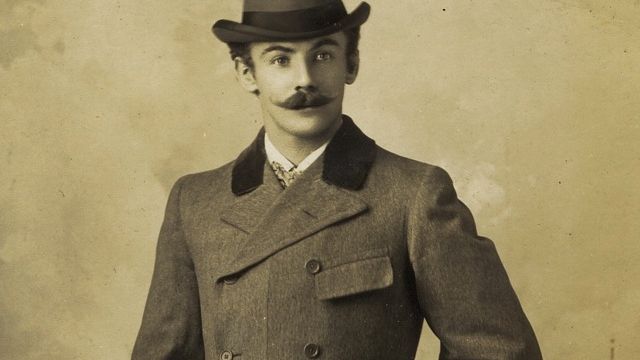What broke the heart of the World’s Greatest Juggler?
Juggler Paul Cinquevalli made four visits to Australia between 1899 and 1914. He was a skilled showman who perfected the art of juggling to a degree seldom seen. One of his favourite places became Australia until fate intervened.
Cinquevalli was Polish and started his performing life as a trapeze artist. However a bad accident transformed the mediocre acrobat into the world’s greatest juggler.
Cinquevalli called it ‘the fluke of my life’.
When performing in St Petersburg from the flying trapeze, one of the assistants forgot to wipe the bar of one of the trapeze, and when I swung across space and gripped, my hands slipped. I knew how to fall, that was a part of our training then, but in the downward course I struck one of the wires supporting the poles and this upset my balance and I fell in a heap.
He broke his arm, his leg and crushed his chest. The accident left him with a permanently weakened and slightly misshapen left wrist. It ruined his career as a trapeze artist.
With time on his hands he began entertaining his friends with sleight of hand and unique juggling tricks. They urged him to perform professionally. He began juggling ordinary items like matches, cigars and umbrellas and worked his way to specialty items. Soon he was acknowledged as the foremost juggler of his generation.
Theatre Magazine in Sydney called him ‘unassuming and brilliant,’ and he was a brilliant conversationalist and raconteur. He was a small man, standing a mere 168 centimetres, and, as was expected of a former aerialist, was graceful and fluid in movement. He had a wide variety of skills, including weight lifting and mandolin playing.
Most of his routines were original. He would juggle with billiard balls whilst he held in his teeth a table, a chair and his assistant. One year a pony cart was driven on stage. It was promptly balanced expertly on his chin. Another trick involved balancing a top hat on an umbrella. On top of the hat was placed a half crown and a cigar. The juggler tossed the whole bundle into the air and caught the cigar in his mouth, the half crown in his right eye and the hat on his head.
Cinquevalli had two famous feats, both of which he performed in Australia. The first was the cannon ball trick. A cannon ball, said to weigh 23 kilograms, was suspended about two metres above the stage. It then dropped and Cinquevalli would catch it on his spine.
It had taken him a year to perfect the trick. It was one of his most audacious feats and astounded audiences around the world. The juggler considered it one of his most popular deeds, but not his most dangerous.
However, according to Edward Maas, the Tivoli Theatre’s stage manager, Cinq was well aware that he was risking his life every time he performed it.
The other famous feat was the billiard ball trick. To perform it he wore a tunic with several pockets. He balanced two billiard balls on the thick end of a cue, which was in turn poised on top of a third ball, balanced on a wine glass which was standing on his forehead. With a flick of his body, the tower collapsed and the three balls found their way into the pockets of the tunic.
In 1909 Cinquevalli replaced his traditional all black tights with pink fleshings. The alteration was considered ‘frivolous’ by Theatre Magazine. However it did not affect the performance. On the first night, billiard balls travelled down one of Cinquevalli’s arms, across his chest to the other arm.
In another feat, which caused the audience to gasp in amazement, he used a pyramid triangle and a glass of water. The glass of water was placed on the base of the triangle. The triangle in turn was spun quickly above the head on the tip of a cue … not a drop of water spilt to the stage. The juggler had made a specialty of manipulating ordinary objects. He juggled a piece of paper, a billiard ball and a cannon ball with ease. As a finale he manipulated a hat, an umbrella and a portmanteau suitcase.
Cinq performed before royalty in every country. He entertained Queen Victoria and appeared many times before Edward the Seventh. He was popularly acclaimed as the world’s greatest juggler. He attempted to retire at least twice. Yet he became miserable after each attempt and he thrived on the thrill of being before an audience.
Cinquevalli made another trip to Australia in 1914, but his career was to be permanently affected by the First World War. He was of Polish and German extraction and was ostracised by press and public who were anxious to show their patriotism. Although he had been entertaining audiences for over 20 years, he was now considered an enemy. The man who could not give up the stage lights had them dimmed by racial prejudice. Cinquevalli died broken hearted in 1918.
Leann Richards
To read more articles by Leann Richards, visit
Visit Leann's blog www.hat-archive.blogspot.com/
Looking for jugglers in Sydney? sydneyjuggling.com

